Do you have trouble with color descriptions when writing your novel? I can see colors fine except when I have to describe them in a story. Then I’ll say a character has brown eyes, is wearing a green top with khakis, and has her nails painted red. Remember the childhood refrain you learned to help you remember the colors? “Red and orange, green and blue. Shiny yellow, purple too. All the colors that we see, live up in the rainbow…” Anyway, that might not be an accurate rendition, but it’s how I remember the song.

Rainbow colors alone don’t do justice to the myriad of shades out there. So I’ve written color charts for myself as a writing tool for when I need more interesting variations. You can also classify by categories, such as:
Jewels—pearl, amethyst, emerald, ruby, sapphire, jade, garnet
Flowers—rose, lilac, daffodil, hibiscus, orchid
Minerals—onyx, copper, gold, silver, malachite, cobalt
Nature—thundercloud gray or leaf green or canary yellow
Food—grape, cherry, orange, lemon, lime, cocoa, coffee, fudge, chocolate, peach, nut brown, pumpkin
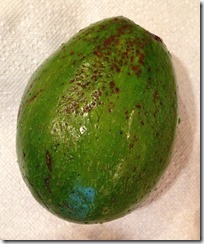
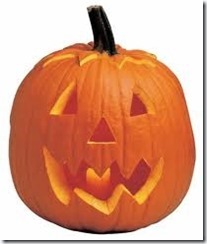
One of the best resources is a department store catalog. You can’t get more imaginative than their names for towels, sheets and sweaters. Thinking white? How about pearl, ivory, parchment or snow?
You get the idea. And so I’ve created a file listing colors which I’ll share with you here. My only request is that you tell me what I’ve missed. Here we go.
· BLACK: Jet, ebony, charcoal, raven, crow, coal, pitch, soot, ink, velvet, cast iron, midnight, onyx, obsidian
· BROWN: Chestnut, auburn, nut, mahogany, walnut, hazel, fawn, copper, camel, caramel, cinnamon, russet, tawny, sandy, chocolate, maroon, tan, bronze, sun-ripened, coffee, rust, earth, sod, dusty, mud
· GRAY: Silver, metallic, gunmetal, steel, cloudy, ashen, foggy, slate, leaden, stone, mist, platinum, smoky, mercury
· WHITE: Milky, chalk, frost, snow, ivory, cream, pearl, opal, parchment
· RED: Blood, apple, ruby, rusty, brick, fire engine, pink, rose
· ORANGE: Tangerine, fire opal, sunset, kumquat, pumpkin, apricot
· GREEN: Emerald, jade, apple, leaf, sea, grass, sage, basil, pea, olive, malachite, forest, lime
· BLUE: Cobalt, indigo, sapphire, turquoise, azure, sky, navy, royal, deep sea, ink, ice, denim, Cerulean blue
· YELLOW: Blond, lemon, daffodil, canary, topaz, golden, tawny, sand, saffron, citron, sulfur, amber, straw, primrose
· PURPLE: Lavender, violet, lilac, amethyst, orchid, mauve


Colors also convey emotions. For example, mud brown and toad green have a less pleasant connotation than chocolate brown and sea green. Browns, oranges, and reds are so-called “warm” colors while blue and green are “cool” colors or more soothing. So choose your hues carefully to enhance a scene.
CLICK TO TWEET
What’s your secret to describing colors? Do you prefer rainbow colors or more specific shades?
GIVEAWAY
Enter to win a $25 Amazon/BN gift card from Booklover’s Bench

Tag: The Writing Life
How Not to Request a Book Review
Occasionally, I’ll get requests from authors to review their books. Some of these I’ve accepted, but mostly I send a polite refusal. Here are some examples of what not to do when approaching an author, especially when you don’t know her personally. This also applies to guest blog posts.
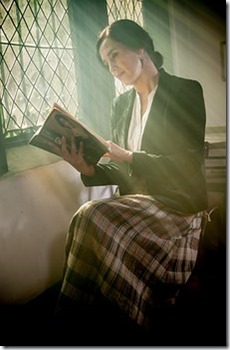
Dear Nancy J. Cohen,
I noticed your review on Amazon for “Murder at the Seaside.” My book is a suspense novel set in Phoenix. It’s a bit outside the cozy genre, but the language is clean and amusing. Would you be willing to read my book and give an honest review?
[When they start with my full name like this, I know they are unfamiliar to me. This book is outside my genre, and the author is an unknown who got my name off Amazon. No deal.]
Dear Ms. Cohen,
I would love to have you interview me on your blog for my upcoming romantic comedy due for release from XYZ Publishing. See back cover blurb below. Please let me know what other information you need to consider reviewing it.
[Is this person requesting a review or a guest blog spot? Either way, her book isn’t my genre, and the author is unknown to me. I’m not interested.]
Dear Nancy,
I’ve finished my first medical thriller and would be honored if I can get a blurb from you. I love your romantic suspense novels. They keep me at the edge of my seat. I’ve really enjoyed reading Hair Raiser and hope to read more of your work.
[This would be a polite, No Thanks. I write mysteries, not romantic suspense. And this person says “they” keep her on the edge of her seat, but she’s only read one. Thrillers are outside my genre, and while occasionally I do read them, I’d rather not be obligated here.]
Hello Nancy J. Cohen,
I saw that you reviewed“The Stolen Queen.” My book has similar elements but more romance and intrigue. [Story Blurb follows]. This romantic adventure is so thrilling and unlike anything you’ve ever read, you’ll be hooked until the last page. My novel is a spine-tingling adventure with exciting twists & turns.
[Bragging about how your book is a bestseller or how it’ll hook my interest is a turnoff.]
Dear Nancy,
I saw that you reviewed the Alex Rider story, “Stormbreaker.” I am author of a middle grade fantasy titled “The Secret of the Oracle.” In this time-travel adventure, Eddie must overcome his fears and battle evil forces in ancient Greece to discover the identity of a sorcerer. Would you like to receive a complimentary digital copy of my book?
[I accepted this one. YA Fantasy is a genre I like to read, and the story line intrigued me. The author didn’t make any braggart claims about how his story will blow me away. He was polite and concise in his request. I enjoyed this book and gave it an honest review.]
Hello,
I have a new release coming out titled “Murder in the Garden,” and I am organizing a book tour. I will provide excerpts and interviews. I’ll be running a Rafflecopter contest, and if you’d like to participate, I’ll include your social media links. (Story blurb follows)
[I accepted this one and was happy to help a fellow mystery author. Why? Not much to do on my part except schedule a blog post on the set day. It’s the appropriate cozy genre. And I’d get social media links in her Rafflecopter. She sounds savvy and will likely show up on the blog to answer comments. This person made things easy.]
<><><>
My Advice
· Request a review from an author who writes in the same genre or who clearly enjoys reading the type of book you’ve written.
· Mention a deadline if you have one for the review.
· Be gracious and accepting that the author might not have the time or interest.
· If you’re proposing a blog post, study the type of posts on the host’s blog and then suggest several relevant topics. Also note, while on her site, if she even hosts guests or has a submission policy.
· Be modest. Don’t make braggart claims about how your book is a bestseller, will keep readers riveted until the end, or is a laugh-out-loud funny story. Readers can judge these things for themselves.
· Mention your website or the Amazon page for your book so the author can find more information there.
· If the author declines your offer, thank her politely for her consideration.
Note that a book review request differs from an endorsement request. What else would you add to this list?
SleuthFest 2017 Recap
SleuthFest 2017 was another stellar event held at the Embassy Suites in Boca Raton. This premier mystery writers’ conference is sponsored by the Florida Chapter of Mystery Writers of America. Third Degree Thursday kicked off the weekend with a bunch of workshops and Dirk Wyle’s Readers’ Corner. That evening, co-chairs Victoria Landis and Joanne Sinchuk welcomed everyone to the conference. We heard publisher Neil Nyren discuss the state of the industry and agents in particular. Then those folks who had signed up attended the “Sleuthfest 101” dinner followed by a trivia contest.


Friday morning, I attended a workshop by publicist Maryglenn McCombs titled Seven Secrets to Promoting a Book. Then I moderated a panel on How to Keep a Series from Getting Stale with authors Lynnette Hallberg, Cheryl Hollon, Carol J. Perry, and Nancy G. West. Using different settings, interesting research, new characters, evolving relationships, and character arcs were some of the techniques mentioned.


Lunch in the ballroom followed with a talk by our Forensic Guest of Honor, Dr. Vincent DiMaio. His graphic slides made swallowing our meal difficult but his talk was fascinating. He spoke about cases that appeared to be natural deaths or accidents, but upon closer examination, proved to be murder.


Another round of workshops followed. Next came my own presentation on Preparing for Your Book Launch. I spoke about the various ways writers can publicize a new book release.
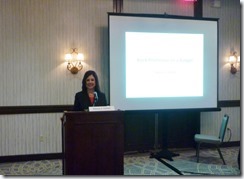
The banquet on Friday evening included the Freddie Awards Ceremony. The winner in the Mystery category was Graham Reed from Vancouver for his entry, The Chairman’s Toys. The winner of the Thriller category was Millie Naylor Hast from Texas for her entry, Takeover.
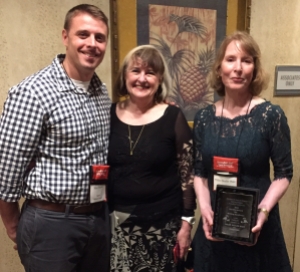
Saturday morning found us back attending workshops. I moderated the one titled Crime Solving Couples with speakers Carol J. Perry and Nancy G. West. The three of us spoke about how the couples work together in our respective series.
Luncheon brought us Keynote Speaker and Bestselling Author David Baldacci, who entertained and educated us while we ate. He’s a great speaker, and I couldn’t wait to read his book “The Finisher” that I’d bought in the on-site bookstore run by Murder on the Beach Mystery Bookstore.

Then former chapter president Randy Rawls presented the Flamingo Award to the very deserving Rick Wymer, who with his wife Mary Lou, have spent hours of selfless devotion as volunteers in the service of FMWA.
At this point, I’m sorry to say, I went upstairs to my hotel room to rest. I’d contracted a cold and sinus infection at the end of the FRW conference cruise, and I was getting worse instead of better. But I made it to the cocktail party that evening and had a nice chat with fellow authors. Still not feeling well, I cut out early on Sunday morning and had to miss our Sunday Guest of Honor, Jeff Lindsay. I’ve heard he was a great speaker and very entertaining.
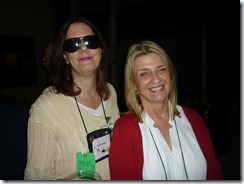


And so now we must begin to plan for next year. Go Here to see more photos.
Six Stage Plot Structure – Part 2
Michael Hauge’s Six Stage Plot Structure, Part 2 – The Inner Journey
The second part of Michael Hauge’s talk on Six Stage Plot Structure at the Florida Romance Writers Cruise Conference deals with inner conflict. If you missed Part One, read it Here. For the sake of expediency, I use the term “heroine” but these principles apply to the hero as well.

Disclaimer: Any mistakes in this summary are due to my misinterpretations.
The writer wants to elicit emotion in the reader. You can convey emotion and show us what’s going on without the need for dialogue or internal reflection. i.e. A lonely guy is staring at the empty furniture in his house. We get a sense of loss.
Character, desire, and conflict are the key components to storytelling. “Stories are participatory. We become the hero or heroine in the story.” We want to create a movie in the reader’s mind.
Modulate the tone and pace of the story to heighten emotional response. Here Mr. Hauge showed us clips from the movie “UP” as an example.
Key Components of the Inner Journey
Longing or Need
This is a desire that is expressed but the protagonist does nothing about it. It’s a hole in the character’s soul. A longing is expressed while a need is not acknowledged. This need is usually for a connection with another person.
Wound
A painful experience from the past is still driving the protagonist’s behavior. Most typically take place in adolescence. In “Up,” the older man’s wife Ellie dies. His wound is that he never gave her the adventure he’d promised.
Belief
We formulate a belief to explain what caused the wound, and to prevent it from happening again. In “Up,” the guy believes he failed by not keeping his promise. In a romance, it might be the heroine’s belief that if she loves again, her heart might be broken like before, and she might not survive this time. Or, an abused child believes he deserved punishment. The belief is never true but it is always logical.
Fear
We harbor the Fear that the painful experience will happen again. The Belief is very specific as to what may cause it to reoccur. For the abused child, the fear might be of letting anyone see who he truly is. An abandoned child might believe that anyone he gets close to will disappear. In “Up,” the man’s fear is that if he lets go of Ellie, he’ll lose all connection to her (i.e. he’ll lose her again).
Identity
The Identity is the false self we present to the outer world that allows us to feel safe. It protects us from the fear that grows out of the belief that was created by the long-ago wound. In “Up,” the main character has turned into a curmudgeon who lives in an empty house with Ellie’s things still there. If he sells the house or lets anyone inside, he might lose his memory of her. He must protect his memory of her at all cost. Our identities keep us feeling safe. It’s our emotional armor. But it makes us believe this is who we really are.
Essence
The Essence is a person’s true potential if they let go of the Identity. We see who this person really is underneath their façade.
The heroine of a story must leave her identity behind and live fully in her essence. This is the only way to achieve the outer motivation or visible goal.
Identity versus Essence is the Inner Conflict. The heroine’s inner journey or character arc takes her from living fully in the Identity to living fully in the Essence.
Looking at the Six Stage Plot Structure, in Stage One which is the Set Up, the heroine is living in her Identity. She believes the wound is in the past and over. Then an Opportunity arises that moves her to a New Situation. In the New Situation, the heroine is still in her Identity but she gets a glimpse of what living in the Essence would be like. She sets a goal.
To achieve this goal, she must live in the Essence. In the film “Up,” the main character realizes his wife Ellie viewed their marriage as an adventure. He throws out their furniture, which has served as his emotional armor, and he moves on to a new adventure. He goes into his Essence and achieves his goal.
The inner journey involves moving from Identity to Essence. This exposes the Fear, and so the protagonist retreats to her Identity before finally embracing the Essence. The Aftermath shows the reward where the heroine has found the courage to move beyond her Fear and live her truth.
This character arc should be a universal truth, while the outer plot is specific to the story. i.e. To live fully, we have to be willing to let go of the past and move forward.
This transformation should be gradual and not an epiphany. During the third stage, the character makes Progress. She vacillates between her Identity and her Essence. She feels vulnerable at getting a glimpse of her Essence and retreats back into her Identity.
In a romance, the biggest weakness is when there’s no solid reason why these two people should be together except the author wants it. Attraction at first sight is okay, but physical chemistry only takes you so far. This does not make for an enduring relationship. Why are these two people in love? They fall in love because they are each other’s destiny. The hero is the only one who sees beneath the heroine’s Identity and appreciates her true Essence. And vice versa. They connect at the level of the Essence. When there’s a love triangle, the guy she’s going to leave represents her Identity. The guy who is her destiny represents her Essence.
Conflict takes place at the level of Identity. Connection is at the level of Essence.
At the Change of Plans, the characters may not recognize their goal of pursuing each other but the reader does. You can put them into a competition or force them to work together. At the half-way mark, they can acknowledge their goal but still resist it.
Complications (Stage Four) ensue as the outside world intrudes. The heroine might feel safe but unfulfilled in her Identity. She can have it all, but she has to get past her Fear. She may think, “I’ll do whatever it takes to achieve my goal. Just don’t ask me to [blank] because that’s not me.” You know it’s the right thing if [blank] scares her.
At the Major Setback, both characters retreat to their Identities to feel safe. In a romance, this is the Big Black Moment.
The heroine’s reflection character (best friend, sidekick, etc.) says, “What are you doing? This isn’t you. Go after him.” The reflection reminds the character of who she truly is.
The hero and heroine make the Final Push (Stage Five) to achieve their goals and win each other’s love. They return fully to their Essence. The Aftermath (Stage Six) shows their transformed existence.
For more information on Mr. Hauge’s one-on-one coaching, visit StoryMastery.com
CLICK TO TWEET
GIVEAWAY
Booklovers Bench, March 1 – 18
Enter Here to win a $25 Amazon/BN gift card from Booklover’s Bench

Six Stage Plot Structure – Part 1
Michael Hauge’s Six Stage Plot Structure, Part 1- The Outer Journey
Michael Hauge teaches a terrific class on Six Stage Plot Structure. Michael has coached screenwriters, producers, stars and directors on projects for every major studio and network, as well as top public speakers and corporate leaders. He’s the author of Writing Screenplays That Sell and Selling Your Story in 60 Seconds: The Guaranteed Way to Get Your Screenplay or Novel Read, as well as his best selling lecture with Christopher Vogler, The Hero’s Two Journeys. Michael is also a popular speaker around the world. We were fortunate to have him with us on board Independence of the Seas for the Florida Romance Writers Fun in the Sun cruise conference.

Disclaimer: Any errors in this summary are due to my misinterpretation.
Key Components of the Outer Journey
Set Up (Stage One)
Here’s where you introduce the protagonists and show them in their normal life. You’ll want to establish an emotional connection with readers. Create empathy with the main character and connect the reader to her before you introduce any flaws. How do you do this? For the sake of expediency, we’ll use the term “heroine” but these principles apply to the hero as well.
1. Create sympathy by making her the victim of undeserved injustice or misfortune.
2. Put your character in jeopardy, but it doesn’t have to be physical. It can be the threat of loss for something vitally important to the character.
3. Make your heroine likeable by showing her kindness or generosity. Show that she is well liked by others.
4. Make the character funny. She can be funny by saying things that are unfiltered and not politically correct.
5. Give her a skill set that we admire. For example, we admire people who can get things done. They have the power to accomplish things.
Next show the protagonist as being stuck or in a state of inertia. They’re tolerating a situation or lying to themselves, and something is missing from this person’s life. Another character in the story tells them what they need to learn in order to progress.
In a romance, do we meet the hero and heroine separately before they come together, or do they come together at the outset? Determine if you’re using one or two viewpoints for these characters. If we meet the heroine first and encounter the hero when she does, you can use the singular viewpoint.
Opportunity (Turning Point 1)
Something happens that has never occurred to the main character before. It jolts the heroine out of a normal life and she must react. This can be a good or bad event, but either way, it will result in the heroine’s preliminary goal, a desire to move to a …
New Situation (Stage Two). Now the protagonist must figure out what’s going on and how to react, and in response will formulate a specific, visible outer motivation.
Change of Plans (Turning Point 2)
The heroine will begin pursuing the outer motivation.
Most Hollywood movies involve a heroine pursuing one or more of five visible goals:
1. To win the love of another person or a competition
2. To stop something bad from happening
3. To escape a bad situation
4. To deliver or transport an item of value
5. To retrieve something of value and bring it to safety or possess it.
Emotion should grow out of conflict and not out of desire. In a romance, you have to delay pursuit of the love interest. Or, have them meet but then go back and show their normal lives beforehand. Or, force them together but give them different goals. The heroine should have another goal than pursuing the guy. For example, “You two have to work on this project together. The outcome will determine which one of you gets the promotion.” Hold back her admission that she’s falling for the guy by giving her a different goal to pursue.
In a mystery, the dead body presents the Opportunity. The sleuth makes a discovery at the one-quarter mark. A new event leads to a new goal, i.e. “It looks as though we’re going after a serial killer.”
Progress (Stage Three)
The heroine’s plan seems to be working. She’s moving closer to her goal but still has conflict. She must bypass or overcome obstacles until the midpoint or Point of No Return (Turning Point 3). Something happens that forces the protagonist to make a full commitment to her goal. In a romance, it might be the first kiss, or the first time your couple goes to bed together. Now they are not able to return to the life they once had.
Complications (Stage Four)
It becomes more difficult but more important to reach the goal. If the heroine loses the hero now, she risks losing her destiny. But the outside world is closing in and the conflict becomes greater and greater, until the main character suffers a Major Setback (Turning Point 4). All appears lost. In romance jargon, we call this the Big Black Moment. This is when the two lovers break apart.
Retreat and Final Push (Stage Five)
Each character will try to return to the way they were in the Set Up. They go back to the original situation, but it’s no longer satisfying. So the protagonist makes a final push to achieve her goal.
The Climax (Turning Point 5) is where the heroine faces her biggest obstacle. She either achieves her goal or she doesn’t.
In the Aftermath (Stage Six), we see the heroine in her new life. In a romance, we see how the hero/heroine will be living together. It’s the reward at the end of the goal. They’ve reached their destiny.
For more information, visit StoryMastery.com
CLICK TO TWEET

See all cruise conference photos HERE.
Coming Next: Michael Hauge’s Six Stage Plot Structure, Part 2 – The Inner Journey
GIVEAWAY
Booklovers Bench, March 1 – 18
Enter Here to win a $25 Amazon/BN gift card from Booklover’s Bench

Writers Conference on Independence of the Seas
Fun in the Sun Writers Conference on Independence of the Seas
Sponsored by Florida Romance Writers
February 16, 2017
As soon as we boarded Independence of the Seas, we headed to lunch in the Windjammer Café. Entrees were tempting. They had the grill with burgers and hot dogs inside here instead of out on the pool deck like on other ships. Desserts were not overly appealing, especially after the artistic confections on Celebrity Equinox. The cookies were the crunchy type, whereas I prefer soft, chewy centers. However, there is a soft ice cream machine on the pool deck that’s free to guests.


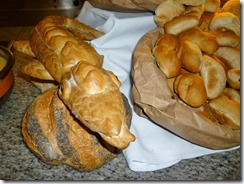
We strolled around and unpacked a bit before the lifeboat drill. This one took place outside on the deck where we lined up like sardines and stood there for a half hour until dismissed. No life vests required for the drill, which was a bonus. However, I prefer the cruise lines where you sit in an air-conditioned lounge to hear the spiel.


The FRW Meet & Greet Welcome Party had the editor/agent panel where we heard what each industry guest has on their wish lists. This event gave us a good chance to mingle in the Olive or Twist lounge on Deck 14. Here I am with my agent, the wonderful Evan Marshall from The Evan Marshall Agency.
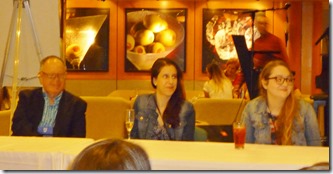

Shortly thereafter, we attended dinner in the King Lear Dining Room. I’m not a late diner, and eating at 8:30 led to a long evening on a full stomach. Some nights we didn’t finish until after ten. While the food was good, it wasn’t exceptional. Nor was the dining room service as efficient as on other vessels.

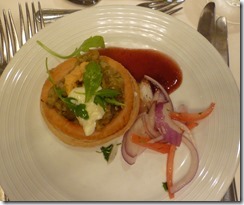

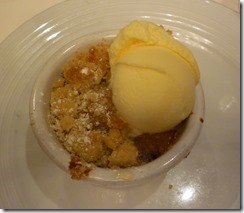
Our cabin service was excellent, though. The balcony cabin was spacious with adequate storage. We had an extra-long couch across from a desk console. The shower is the round manhole cover shape but at least it has a glass door. Don’t drop your soap on the floor. You have to be a contortionist to pick it up. I used my slumber mask as light came in from outside the ship at the edges of the drapes. Bathroom amenities included bottles of lotion, shampoo, and conditioner. The bar soap was very thin. I missed the robes we get on other cruise lines.






We awakened at our usual early hour. I prefer the buffet for breakfast and lunch. Breakfast in the Windjammer Café offered varied choices, but they didn’t change much from day-to-day. A chef would do made-to-order omelets. Pancakes and waffles were always available along with the usual fruits, pastries, yogurt, and more.



Our conference workshops began promptly at 8am on Friday. Stay tuned for more in the next installment. See all photos HERE.
Tropical Treats Giveaway, Feb. 21 – March 14
ENTER HERE to win a blue scarf, a blue crystal pendant necklace, a West Indies cookbook, and a signed hardcover Killer Knots.

Facials Can Be Fatal – New Book Release
I’m excited to announce the release of Facials Can Be Fatal (Bad Hair Day Mystery #13) from Five Star Publishing. This cozy mystery title is available in hardcover and digital editions.

Salon owner Marla Vail’s new day spa hits a snag when a client dies during a facial.
“Take a twisty mystery, add a cast of amiable characters, a dash of family drama, and a pinch of South Florida during the holiday season—they all add up to the recipe for a delightful cozy!” —Lucy Burdette, bestselling author of the Key West Food Critic Mysteries.
“Marla and Dalton solve a mystery that includes pirates and shipwrecks off the Florida coast, and readers will be standing in line to get on this series as fast as possible. Marla and Dalton work extremely well together and are a whole lot of fun to read. This is one book in a series but is also a fantastic standalone for anyone who might not have met this couple before.” Reviewed by Mary Lignor for Suspense Magazine.
“Facials Can Be Fatal is a nice, comfy, cozy mystery starring Marla Vail and her new family. Although this is one book in a series, it is a great standalone. I recommend this book to those who are cozy mystery fans and enjoy a sleuth mystery with many twists and turns.” 5 Stars! Reviewed by Susan Sewell for Readers’ Favorite
Note: This story includes excerpts from a true-life travel journal titled Florida Escape written by my father.
Join my Book Launch Party TONIGHT from 6:30 – 8:00 pm EST. Fun and prizes! https://www.facebook.com/NewReleaseParty/

Click Here for Author Appearances and Blog Tour. Coming next is:
Feb. 22: Dru’s Book Musings, “A Day In The Life” Guest Post
Feb. 28, Terry’s Place, Character Interview,
View the Book Trailer
Add to Goodreads
Order Now at Amazon or BN or get a Signed Copy from Murder on the Beach Mystery Bookstore.


![]()
Reviews are always appreciated. Please send me the link if you post a review so I can thank you personally.
CLICK HERE TO TWEET about the new release.

Tropical Treats Giveaway, Feb. 21 – March 14
Enter to win a blue scarf, a blue crystal pendant necklace by Effy, a West Indies cookbook, and a signed hardcover Killer Knots

Sign up for Nancy’s newsletter to learn about her book news, appearances, contests, and recipes. FREE Book for new subscribers.
On Sale Permed to Death
The Open Road Media ebook edition of Permed to Death (Bad Hair Day Mystery #1) is on sale TODAY ONLY for $1.99. This edition is based on the original version published by Kensington.





If you want my revised Author’s Edition instead, also available in print and audiobook, Go Here.
Booklover’s Bench Anniversary Giveaway, Feb. 1 – 18
Enter Here to win a Galaxy Tablet from Booklover’s Bench in our anniversary contest

Writing the Mystery – Howdunit?
When writing a cozy mystery, you need to decide upon crime scene details even though interpersonal relations and not forensic investigations are your story’s focus. Here’s an example of what this means. For my next book, I decided to start the tale at a bake-off contest, but the setting bothered me. Our city fairs are held on athletic fields or a flat stretch of grass in a park. This doesn’t leave much opportunity to stash a dead body.
I was telling this to my manicurist and mentioned that I needed a more interesting setting. She suggested Bedner’s Farm as a possible model for my story. The next day, my husband and I drove north to visit this farmer’s market in Boynton Beach. See my post for a report on this visit. The varied structures and grounds were ideal for my purposes, but I’d move my fictional site nearer to Marla’s hometown. Marla Vail is my hairstylist sleuth and the star of the Bad Hair Day Mysteries.


Now what? Francine Dodger is the target of the festival’s Find Franny scavenger hunt. I got this idea by looking up harvest festivals online. This drove me to research living scavenger hunts until I had an idea of how mine would work. Think about the five W’s when you’re in this phase.
Who ends up dead? Let’s say Francine is the victim.
Where is she killed? How does she arrive there? Is she lured on purpose, or it is a crime of opportunity? Did the killer follow her? Determine Where-dunit.
How does he do it? She could be drowned in a ditch. Water-filled canals line the U-pick rows. But other customers might be milling around there. Will it look like an accident or right away be identified as a homicide? She can fall down a silo. But what would make her climb up there in the first place? Or she could be runover by a tractor.
What knowledge does the killer need? If the murder involves an equipment accident, it’ll have to involve someone who knows to operate the machinery. Ditto the hazards inside a silo. You don’t want to point the finger at a particular suspect like the farmer, because it’s too obvious. Maybe give one of the other characters a secret history of working on a farm or of selling agricultural machinery.
If you poison a victim, who has knowledge about the type of poison used as well as access to it? Is it fast-acting enough for the circumstances, or do you need a slower more insidious death? What are the particular symptoms? Consider your means of murder very carefully when you’re making these decisions so your story will sound plausible.
When does it happen? Think about not only the time of death, but also why not a week or a month ago? Why NOW?
How does the killer get away? Does he have blood on his clothes? Are his shoes wet or muddy? Is he able to blend back into the crowd? How does he act when he encounters the heroine?
Now let’s throw a wrench into the works.
What if it’s a case of mistaken identity? He thought he had killed one woman but he got somebody else who was similarly attired. How will he react upon seeing his intended victim alive and well? This leads to another set of problems. It means he can’t see the victim’s face before he kills her, or he’ll realize it’s the wrong person. So again, we go back to Howdunit?
Once you figure out these details, you’ll have to determine how your amateur sleuth stumbles across the dead body. And this is when the story actually begins.
Writing the Cozy Mystery - Howdunit? Click To TweetSave
Save
Save
Writing the Mystery – Whydunit?
In the previous post, we discussed character development. As you figure out each person’s goals and secrets, you need to determine how that character relates to the others. Think of a spider web. The victim is in the center, and all of the other threads are the suspects. Or visualize it as a character wheel with spokes. Whichever model you choose, you’ll want to connect the characters to each other.
Here are examples from my WIP to show you how it’s done. The characters are involved in a bake-off contest held during the spring festival at a local farm.
Tally Riggs, my hairstylist sleuth’s best friend, met Becky Forest at a local historical museum. She told Tally about the bake-off.
Becky, a scientist, is a cookbook author and curator of the museum. She studies plant remains of ancient peoples, including early Florida food practices. Every time Becky has a new cookbook out, she’s a guest on Chef Raquel Hayes’ TV show.
Raquel, a judge at the bake-off contest and a TV chef, did something in the past that could scandalize her. Francine Dodger recognizes her on TV and threatens to spill her secret.
Francine, a contestant at the bake-off, is a food magazine editor. While researching an article on the farm, she uncovers something that could ruin the owners’ reputation.
Zach Kinsdale, eldest brother of four siblings who run the family farm, hasn’t told his two brothers and sister Janet about this looming disaster.
Janet is married to Tony, who runs an import-export business. He sells his imported olive oils to Zach for the farm’s marketplace. But Janet suspects something unethical about her husband’s business. She’s the one who organized the bake-off since her husband’s company is a festival sponsor.
Tony, Janet’s husband, is worried about an exposé that Francine has mentioned. He’s also concerned about Tristan Marsh, pastry chef at The Royal Palate and a judge at the show. Tristan has been making inquiries that concern him. He’s not the only one. Alyce Greene, a blogger who supports the farm-to-table movement, has been troublesome as well.
Alyce is a contestant at the bake-off. She’s married to Jon, a food truck operator. Jon got a loan to start his business from Alyce’s brother, Steve Madison. Steve, an investment advisor, manages Tony’s accounts.
And so on. You get the idea. It helps when the puzzle pieces fit together as a whole, but this process may take a while. In the meantime, allow your subconscious to stew on these ideas until story magic happens. The connections will pop into your brain. It’s a joyful moment when this occurs. It always does; you have to maintain faith in the creative process.
Now you know as much about these people as I do. Next comes Writing the Mystery – Howdunit.

